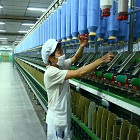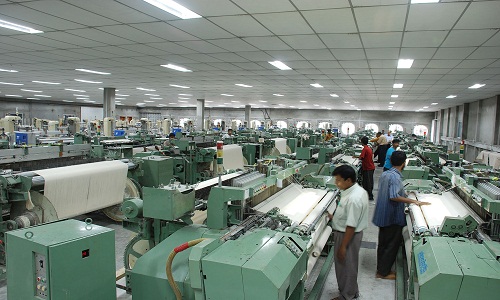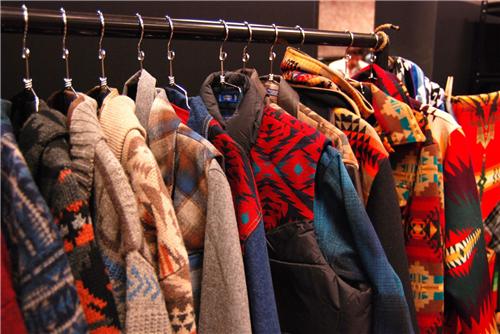FW

Textile mills that processed cotton and wove it into cloth were once a monopoly of the southern US states before World War II. However, in the past 50 years, free trade agreements, automation and competition from countries such as China have affected these mills. Eventually, their businesses have touched ground zero. However, now, some textile jobs are making a comeback, but in a different way. As The New York Times reports, some Chinese manufacturers are setting their businesses in the US, after realising that it is cheaper to manufacture their products in Southern America than in China.
South offers lucrative business prospects

A Chinese yarn-maker, Keer Group, is investing $218 million in a US-2factory in South Carolina, while JN Fibers, another Chinese manufacturer, is investing $45 million in the same region. Then, there’s Shri Vallabh Pittie, an Indian company that is investing $70 million in a yarn-spinning plant in Sylvania, Ga. Other industries too are witnessing a change, Fuyao, a Chinese auto glass maker is investing in a $230 million production facility in Ohio. Besides, several Chinese manufacturers are expanding their capacity at Cirrus Aviation in Minnesota and Nexteer Automotive in Michigan.
The difference between the cost of manufacturing something in the US and in China has narrowed considerably, as per an index created by Boston Consulting. A product that could be manufactured for $1 in the US in 2004 could be produced for 85.6 cents in China. Ten years down the line, $1 for the product in the US would cost 95.6 cents if manufactured in China, which was not much in savings.
The reasons for the shift are many, though the cost differences haven’t changed much. For instance, Americans are still earning more wages than the Chinese workers are. According to figures from the Boston Consulting Group, Chinese workers made $12.47 an hour in 2014, which was slightly more than half of what American workers made at $22.32 an hour.
There are other factors that have made up for the difference in cost of doing business in the US. The state and local governments, for example, offer plenty of tax breaks and subsidies to companies that set up business in their jurisdictions. Besides, decrease in the cost of electricity, due to US’ natural gas boom, has attracted energy-intensive manufacturing industries. Also, as China’s economy has developed, wages have gone up, and thus the costs of land, energy and other raw materials.
Boston Consulting Group’s data shows that even when adjusted for productivity, over the past 10 years, wages of Chinese workers have risen by 187 per cent. Industrial electricity costs have gone up 66 per cent, while natural gas costs have risen by 138 per cent. The US wages, in the same timeline, have increased by only 27 per cent, while natural gas costs have dipped by 25 per cent.
Experts say, it is a lot easier to manufacture in the US products where Chinese companies need access to qualified labour or proximity to American consumers, but don’t need lots of low-cost labour. Chinese investment in the US though, remains small, but as some data by the Rhodium Group reveals, it is bringing tangible economic benefits in the form of jobs.
As far as manufacturing jobs in the US are concerned, it will never be the same as the 80’s, as industries are much more automated today. However, more skilled manufacturing jobs would act as a boon to the country’s economy. These workers are better paid, as manufacturers today need more highly trained workers who know how to operate automated systems.
Yet, China still is powerful where manufacturing is concerned, for the move out of the country applies to new industries and not existing ones.
In an attempt to realise Punjab chief minister, Shahbaz Sharif’s dream of turning the proposed Quaid-e-Azam Apparel Park in Sheikupura in Pakistan into the most modern project of South Asia, Punjab Industrial Estates (PIE) Development and Management Company has signed a contract with China Textile Network Company Limited. Under the contract, the Chinese firm will carry out a detailed designing of power plant, infrastructure, Combined Effluent Treatment Plant and grid stations for the set up of the apparel park.
The PIE Chairman, S M Tanveer, says that the Chinese, accorded the task, is a leading multinational firm and specialised in apparel and textile sector. The project the firm is supposed to work on, once completed not only will give a boost to the textile and garments sector but also play a terrific role in the growth of the economy. The park boasts of all necessary facilities for the apparel sector under one roof. It will also generate employment for thousands and will be instrumental in revving up the export of the country in this sector. The firm will also help the in marketing and promotional activities.
East African countries, particularly Ethiopia and Kenya, are fast emerging as leading clothing manufacturers. However, there governments, employers and buyers need to pull together and improve business conditions. Since 2013, buyers – among them H&M, Primark and Tesco — have been increasingly sourcing from East Africa, helped by the renewal of the African Growth and Opportunity Act (AGOA), which gives certain countries in sub-Saharan Africa duty-free access to the US market.
Apparel exports from Ethiopia, Kenya, Tanzania and Uganda amounted for a combined $337 million in 2013. Bangladesh remains at the top of the list of future sourcing destinations, followed by Vietnam and India, but East Africa is clearly on the rise. Sub-Saharan Africa, East African countries—especially Ethiopia and Kenya, and to a lesser extent Uganda and Tanzania—are of interest to apparel buyers. Both Ethiopia and Kenya are taking steps to develop their domestic textile and garment industries.
However, if East Africa is to enjoy sustainable growth in garment manufacturing, governments should consider investing in infrastructure, supporting local entrepreneurs, diversifying free trade agreements and building market-oriented educational institutions. Suppliers will also need to upgrade their facilities and enter into long-term partnerships with buyers, while buyers will need to evaluate the region as a true strategic option rather than just a testing ground.
The Integrated Skilled Development Scheme introduced in India in 2010 -11 to address the manpower requirements of textiles and related segments has a target to equip 15 lakh people by the end of March 2017. It’s expected to help overcome the shortage of skilled workforce in textile sector and become a growth driver in the industry and trigger innovation and scale.
The government provides a grant subsidy of 75 per cent of the project cost with a ceiling of Rs 10,000 per trainee. So far around 4.20 lakh candidates have been successfully trained across diverse sectors like apparel and garments, textiles, handlooms, handicrafts, sericulture, technical textiles, jute etc. Around 3,250 training centers are there across states, cities and rural areas including remote locations, backward regions and left wing extremism-affected areas.
During 2010, around six projects were sanctioned under the scheme. This has increased progressively to 57 in the year 2014 and 76 in the year 2015-16. The scheme was revamped in 2014-15, with a view to simplifying procedures and focusing on partnering with industry for scaling up of implementation of the training program with assured employment.
Steps have been taken to devise strong monitoring norms and to enhance the quality of training. There has been a continuous endeavor towards digitisation of skill development initiatives.
India's acreage under cotton during the ensuing 2015-16 season is going to be less than that of the current crop year. Yield is, however, likely to be higher during the 2015-16 crop season due to good and timely rainfall in the cotton growing areas. Production for the 2015-16 season, therefore, is expected to be similar to that of the 2014-15 crop year. However, yield may go up due to timely rainfall in the cotton growing areas and the crop for the next cotton season is expected to match the previous year’s figures.
The total cotton supply in the next season is estimated at 470.65 lakh bales while the domestic consumption is pegged at 325 lakh bales, leaving a surplus of 145.65 lakh bales for exports. Mill consumption is estimated to be 285 lakh bales with demand from small scale units and non-mills also supporting the bullish trend in consumption.
The Cotton Corporation of India has procured about 87 lakh bales to provide price support to farmers. However it may not be able to sell a sizeable quantity of cotton at the end of the season. Global cotton output is estimated to decline by nine per cent in the crop year 2015-16 on diversion of acreage to other remunerative crops.

Textile is one of the largest and fastest growing industries in India. It is expected to grow from $126 billion in 2015 to $200 billion by 2020. “Despite positive statistics, the state of domestic hosiery industry is not very optimistic,” says Jyoti Jain, Jt Managing Director, TT, adding, “The scenario is very bleak and unpromising at present as the industry is facing cut-throat competition.” Points to Ponder

India is one of the world’s fastest growing economies with GDP likely tocompetition3-620x350 grow over 8 per cent, benefiting from the acceleration of infrastructure projects, strong consumer spending and other favourable macro-economic factors. It also has a strong retail market worth $600 billion. However, players are not practicing healthy competition, and that is proving to a bane for the overall industry.
Jain states, one example of negative impact of herd mentality is, when a brand reduces product prices due to some personal reasons, other players follow suit and there is a domino effect. Ultimately, no one gains from the price cut. In fact, the market scenario becomes worse -- spoiling consumer sentiment and impacting overall demand.
Continuous deals and discount strategies are adding to the woes if players, since low consumer sentiment pushes shoppers to buy only during the discount season. Jain points out that the industry has created this situation and now, the consumer is not willing to purchase a full-price product and ultimately companies bear the brunt since on the prices of all raw materials and labour costs are rising.
“Offering some festive deals to please the shopper is fine but we are too generous and keep offering schemes after schemes. Who offers discounts when we buy raw materials in bulk?” questions Jain. Appeal to the hosiery industry
Jain appeals to hosiery industry players to follow certain rules such as not giving credit to wholesalers, ensuring timely payments by wholesalers/distributors, not turning a financer for dealers, so that they can buy other related categories offered to sell in the market and so on. “Due to lack of unity among us, often dealers delay payment or even default on payments. Our association should be strong enough to inculcate fear among dealers about default,” she says.
Keeping the hosiery industry’s current situation in sight, Jain is of the opinion that players must act quickly instead of unnecessarily investing funds in heavy advertising and marketing efforts, discounting strategies hoping to race ahead of other brands. “Are any of our friends in hosiery manufacturing business benefiting from the cut throat competition? I don’t envisage any brand actually reaping benefits. Therefore, I request all brand owners to introspect and look for answers,” she asserts.
www.tttextiles.com
Unstable prices are posing a threat to sericulture farmers in Coimbatore. Since June, prices have been fluctuating. They have gone as low as Rs 170 per kg. But farmers hope for a minimum Rs 300 per kg. Cocoon prices in the country fell by more than 60 per cent once the import duty on raw silk from China was reduced from 15 per cent to 10 per cent. This has allowed weavers and silk dealers to buy raw silk from China, which is considered to be of superior quality, at almost the same price as that of domestic raw silk.
With prices hovering at less than Rs 250 per kg from mid-July, sericulture farmers are in despair. Regular silk dealers who purchase cocoons on a daily basis from the sericulture department say that the Ramzan season also led to a fall in prices. Most silk and yarn wholesalers are Muslims, and they don't work during Ramzan. So weavers get very few orders. The peak season for cocoons is between December and February and again between June and August.
Fully formed and recently removed cocoons can't be left open for more than three days or refrigerated for more than 20 days, because they start rotting.
German company Trutzschler, a global leader in textile machinery manufacturing is active in spinning preparation, nonwovens and the man-made fiber industry. Its data acquisition system T-Data is increasingly becoming a standard. Due to Trützschler-specific sensors on machines, important quality data that cannot be acquired by any other system can be managed and evaluated here.
With three detection technologies in one machine, Trützschler claims to have already set a high standard with efficient foreign part separation in the blow room. Further technologies will be added to the existing three to get an even more effective separation. Trützschler nonwovens focuses on a variety of manufacturing processes, especially pertaining to web bonding and total system concepts. Individual components and models demonstrate innovation in spun lacing, needling as well as thermal and chemical bonding.
The significant speed advantages of the newly developed liquid foulard are said to be based on special geometries and roll surfaces and should result in an increased economic efficiency in the production of lightweight, chemically bonded nonwovens.
The Trützschler card clothing unit has expanded its flat tops selection with two new products: flat top Novotop 58 suited for application in fine combed yarns at high production speeds. And flat top Novotop 30, developed for the processing of coarse or dyed fibers and regenerated fibers for rotor spinning.
www.truetzschler.com/
International Textile Fair will be held in Dubai on October 11 and 12, 2015. At a time when global trade and apparel sector is expanding tenfold per annum, ITF has gained prominence as an elite textile expo with an intercontinental outlook.
Principally a trade only event, ITF provides professional and conducive atmosphere to business and networking for manufacturers, traders and designers both internationally and within the region. In response to the need for a dedicated trade exhibition in Dubai, the show has been designed as a quality event for the fashion fabrics business in the UAE. ITF is attended by leading fashion and apparel buying houses from the Middle Eastern market.
Among visitors to the show are fabric importers, distributors and wholesalers, garment exporters and manufacturers, buying houses and agents, local and international retail chains, department stores, apparel brands, fashion designers and merchandisers, design studios and institutes.
ITF's April edition saw 6,732 visitors. With exhibitors coming in from Europe, Asia, Africa and Australia the event set an eclectic ambience. Acclaimed fashion houses like Carlo Pozzi (Italy) and Bella Donna (UAE) participated. The April edition saw over 100 exhibitors. ITF aims to be a major influence on the UAE fashion scene, provide a professional atmosphere conducive to business and networking and make the UAE leading destination for textile industry automation.
www.internationaltextilefair.com/
Lenzing has almost doubled its earnings before interest and tax in the first six months of 2015, thanks to healthy demand in the second quarter, more savings and a weaker euro. Lenzing is the world’s biggest maker of cellulose fiber. It also hopes to improve full year operating results compared to 2014 and reduce its net financial debt further.
Its specialised fibers such as Tencel and Modal, often mixed with cotton, are used in bed linen for clients like furniture giant Ikea as well as clothes for international fashion brands like Zara and in face wipes sold across Asia. The company is banking on China, which it considers an important market. It expects demand in China to stay strong. Lenzing generates about one-third of its sales in the world’s second largest economy. About half of what it sells in China ends up in products earmarked for export.
First half results also benefited from prices for viscose in China rising at the end of the second quarter as several plants had shut there, providing relief to a global market swamped by cheap Chinese and Indian viscose. Lenzing expects weaker Chinese yuan to change the dynamics between competitors in the sector.












